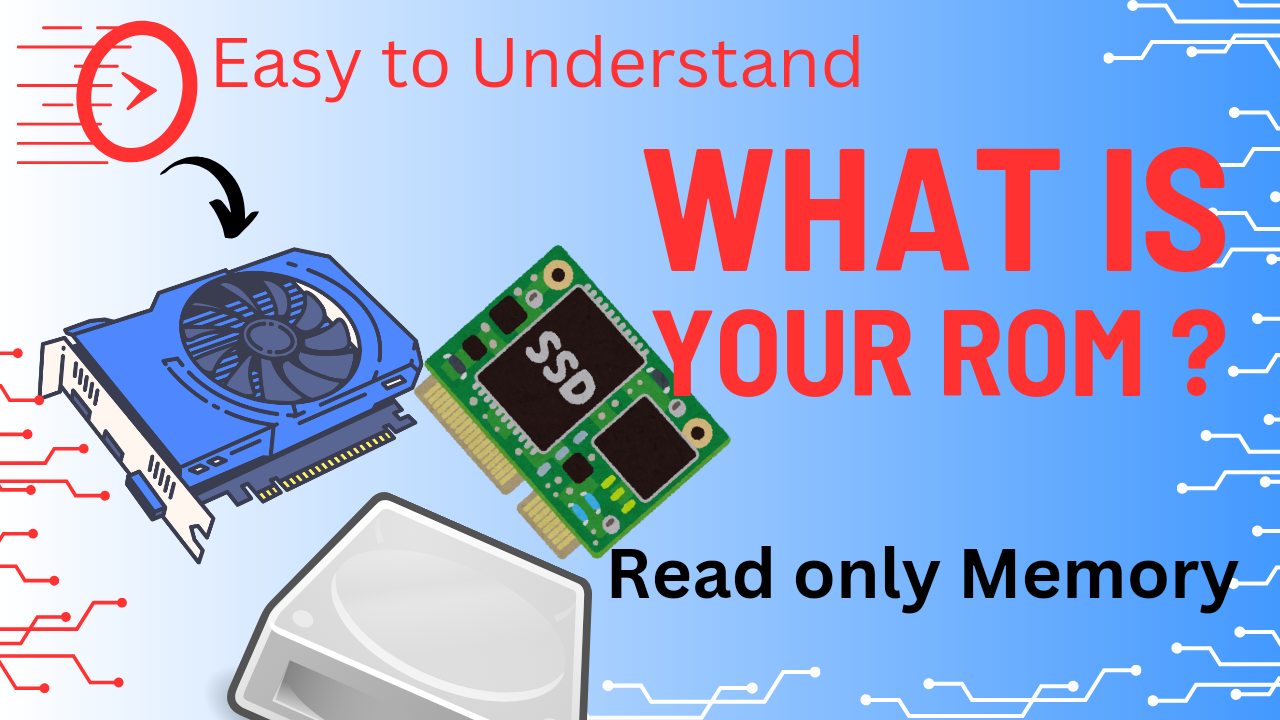What is ROM? Everything You Need to Know About Read-Only Memory
Introduction
Brief overview of ROM (Read-Only Memory) as a fundamental concept in computing.
Mention its importance in storing essential instructions and data in various electronic devices.
What is ROM?
Define ROM as a type of non-volatile memory in computers and electronic devices.
Explain that ROM retains data even when power is turned off, unlike RAM, which is volatile.
Describe how ROM stores critical instructions for device startup and functionality.
How Does ROM Work?
Provide a high-level explanation of how ROM works.
Explain that ROM is manufactured with specific data written onto it, which cannot be altered or erased.
Discuss the read-only characteristic, meaning users generally cannot modify ROM data (hence “Read-Only Memory”).
Types of ROM
1. Masked ROM (MROM):
Explain that MROM is a type of ROM that is hardwired during manufacturing and cannot be modified.
Mention it was the earliest type of ROM and is now mostly obsolete.
2. Programmable ROM (PROM):
Describe PROM as a blank ROM that can be programmed once by the user.
Highlight its one-time programmability and how it’s suitable for specific, unchanging applications.
3. Erasable Programmable ROM (EPROM):
Explain EPROM’s erasable nature using ultraviolet light, allowing users to reprogram it.
Mention common uses in device development and how it’s reusable.
4. Electrically Erasable Programmable ROM (EEPROM):
Describe EEPROM’s ability to be reprogrammed electronically without removal.
Explain how it’s commonly used in computers, BIOS firmware, and consumer devices.
Difference Between ROM and RAM
Create a clear comparison between ROM (non-volatile, read-only) and RAM (volatile, read-write).
Use a table for an easy-to-understand comparison covering aspects like data retention, modification capabilities, and speed.
Why is ROM Important?
Explain the essential role ROM plays in booting up devices, storing firmware, and running essential functions.
Discuss how ROM provides a reliable way to retain system instructions crucial for device operation.
Mention the stability and security ROM provides, especially for software that should not be altered.
ROM in Everyday Devices
1. Computers:
Explain how ROM stores the BIOS/UEFI firmware, essential for booting up a computer.
2. Smartphones:
Describe how ROM in smartphones often stores the operating system and pre-installed applications.
Clarify the common confusion in the term “ROM” used for internal storage
3. Game Consoles:
Talk about how older game cartridges used ROM to store games and data.
4. Embedded Systems:
Describe the use of ROM in embedded systems like washing machines, microwaves, and industrial equipment.
How ROM is Evolving in Modern Devices
Discuss how modern EEPROM and flash memory are adaptations of traditional ROM, offering more flexibility.
Explain how ROM is used in combination with flash memory for faster and more efficient storage.
Advantages and Disadvantages of ROM
Advantages:
Reliability and permanence of data.
Non-volatile nature.
Protection against accidental modification.
Disadvantages:
Limited storage capacity.
Non-writable in traditional forms (not ideal for changing data)
Common Myths About ROM
Clear up common misconceptions, such as ROM in smartphones actually referring to storage capacity.
Explain how ROM isn’t suitable for high-speed data processing tasks, which is where RAM comes into play.
Future of ROM Technology
Discuss the advancements in ROM, such as flash memory replacing traditional ROM in many devices.
Speculate on future ROM applications in IoT, smart devices, and other emerging fields.
Summarize key points about ROM, its types, and uses in everyday devices.
Reinforce the importance of ROM in ensuring
stable and reliable device operation.
End with a call to action, encouraging readers to explore more tech articles on CodeGo.in

